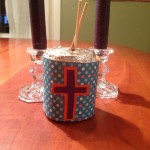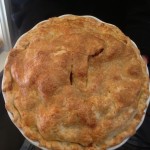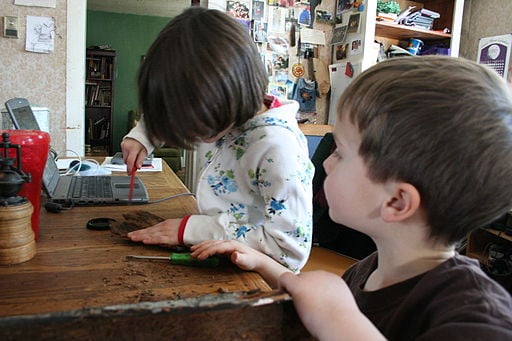Remember back in January, when I was writing about what homeschool looked like every day. I never ended up posting the last two weeks. Well, here they are. Better late than never, right?
Let’s face it. Most elementary school science stinks. It’s not really science; it’s more like the history of science, where children memorize what other scientists learned before them. Making and testing hypotheses? Not gonna happen.
On Wednesdays, the boys join a subset of our little homeschool group to take a science class with Lisa, and I couldn’t be more relieved. I have an engineering degree and taught high school science, but I know nothing about how the world works because until grad school, I never took a real science class.
Longtime readers of this blog will remember that I first realized this as I sat in a chemistry class my first year in college. The professor announced one day that, “We’re going to learn why the atom doesn’t collapse on itself.”
I had known since I was very young that negative and positive charges attract. And I had known since middle school that the atom has a positive nucleus and negative outer rings. So why had I never wondered why the atom doesn’t collapse on itself?
I think it’s because I had figured out early on that if you read the book well, you can pass the test without thinking too much about what was really happening. Even when we did labs in high school, I knew that the purpose was to get the right answer, not to ask and answer interesting questions.
This term, the kids are learning about simple machines. For the last few weeks, they’ve been learning about how inclined planes work. And so have I, because despite my engineering degree, I knew nothing about them.
They’ve been reading and watching videos and building things and figuring out the relationship between distance and effort. They spent much of the last week building a marble run. And today in class, they are screwing screws into wood to better understand how a screw works as an inclined plane.
Yesterday, in preparation for class, they had to draw a picture of a screw and write about it with as much detail as possible. Three of the four kids at my house, excluding Zach, drew their screws with the threads going down from left to right. I thought nothing of it, didn’t even notice it, in fact. But then I asked them all to add arrows showing the direction of the effort and the force. When they did that, I realized that the three of them had drawn screws that wouldn’t work.
So I drew wedges shaped the way their screws were drawn and added the effort error pointing to the right, as it would be if you were turning the screw to the right. “What direction would the force be going in this picture?”
All of them responded that the force would be going up. And then they all started ooh‘ing and nodding their heads. They realized they had drawn it incorrectly and went back to change their pictures.
That’s not exactly an experiment, but it’s exactly the kind of scientific understanding that can happen when you muck around for weeks. They’ve had several two-hour class to build things and have them not work. They’ve had hours at home to build things and have them not work. Then they’ve had the time to adjust and try again. They’ve been playing with screws and inclined planes, and so they have an understanding to build upon. So when I asked them if the screw they had drawn would actually work, they could all figure out why it wouldn’t work.
In turns out, though, that their original drawings, called left-handed screws, do in fact exist. So this week, I’m gonna have Jeff take out some of his left-handed screws and ask the kids, “What’s up? I thought we said these wouldn’t work?”
And I have no doubt that after a little while of thinking about it and trying them out, they’ll figure out that these screws follow the Lefty-Tighty/Righty-Loosy rule. And in doing so, they’ll have an even deeper understanding of inclined planes. And that, my friends, is what science should look like.












